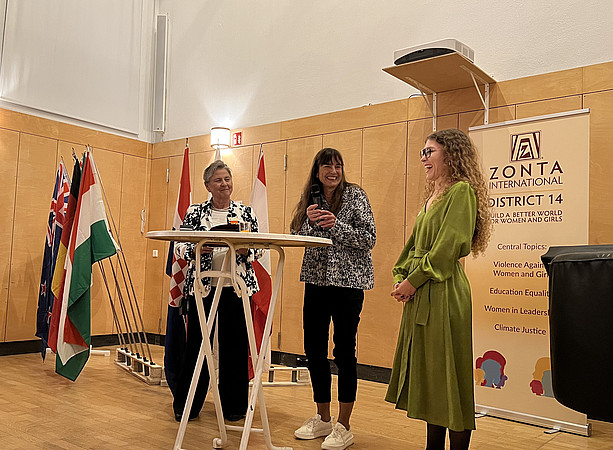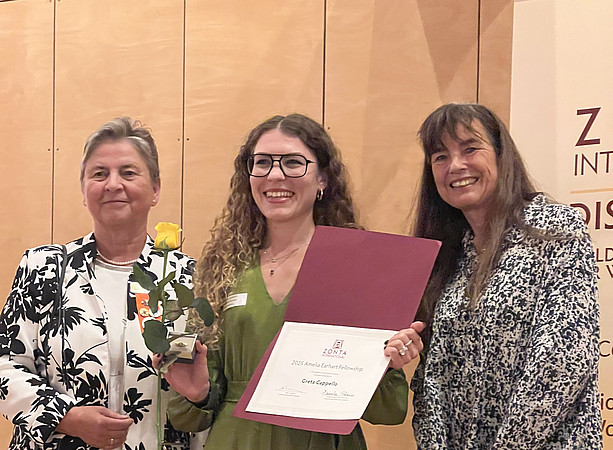Globally, women make up around 25 percent of the workforce in the aerospace industry. In its ongoing effort to ensure that women have equal access to resources and representation in decision-making positions, Zonta International offers the Amelia Earhart Fellowship—one of the organization’s most renowned programs promoting women’s advancement in science and technology. The fellowship was established in 1938 in honor of the famed pilot and Zontian Amelia Earhart. Valued at US $10,000, it is awarded annually to up to 30 women pursuing Ph.D. or doctoral degrees in aerospace engineering and space sciences.
“Winning the 2025 Amelia Earhart Fellowship is a tremendous achievement that places me among a group of fearless women working in space-related fields,” said Greta. “This recognition encourages me to strive for excellence and to contribute meaningfully to the advancement of science as a woman.”
Greta began her academic journey at the Politecnico di Torino (Italy), where she studied Physics Engineering. Her growing interest in astrophysics led her to an internship with the Solar Physics Group at the Pino Torinese Observatory, under Dr. Luca Zangrilli and Dr. Gerardo Capobianco, where she worked in a cleanroom environment characterizing position sensors for ESA’s PROBA-3 coronagraph mission—a formation-flying experiment designed to observe the solar corona.
Motivated by this hands-on experience, Greta pursued a Master’s degree in Astrophysics at the University of Turin, where she also completed an Erasmus+ traineeship at the Austrian Academy of Sciences in Graz, collaborating with Prof. Davide Gandolfi and Prof. Luca Fossati. Her master’s thesis focused on modeling the atmosphere of the ultra-hot Jupiter MASCARA-2b/KELT-20b using the radiative transfer code Cloudy, exploring how stellar types influence planetary chemistry. She graduated with highest honors in November 2022.
Currently, Greta’s doctoral research—funded by the Young Researcher Project—focuses on coronal mass ejections (CMEs). She employs multi-spacecraft observations from Parker Solar Probe, Solar Orbiter, STEREO, SOHO, and the upcoming PUNCH mission to investigate the three-dimensional morphology and internal fine-scale structures of CMEs. Her work combines white-light and extreme ultraviolet imaging to link large-scale solar eruptions to their source regions and in situ signatures across the heliosphere.
Beyond her research, Greta is an early-career member of the ISSI International Team “Tomographic Inversion of Synthetic White-Light Images” and serves on the organizing committee of the Parker Heliophysics Scholars seminar series.


